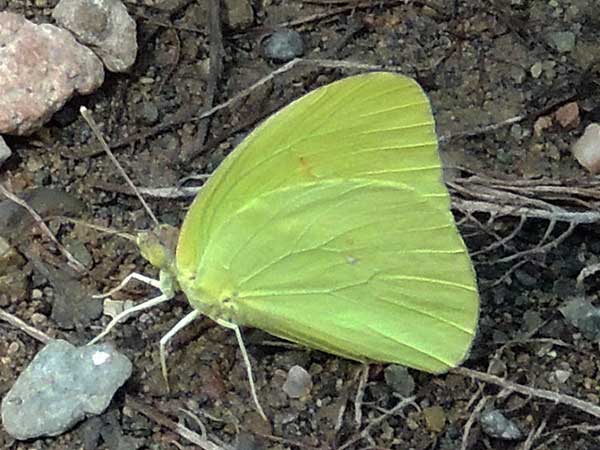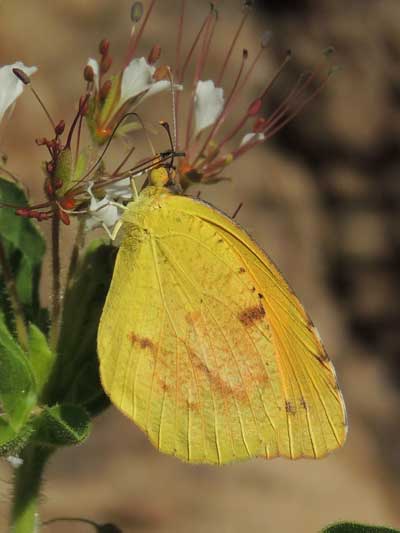Sulfur Butterflies
|
 The Cloudless Sulfur. Solid yellow male at far left. Females, center and right,
may range from pale whitish to orangish and have dark border markings. Photo by
Bruce Walsh.
Butterflies of Southeastern Arizona
The Cloudless Sulfur. Solid yellow male at far left. Females, center and right,
may range from pale whitish to orangish and have dark border markings. Photo by
Bruce Walsh.
Butterflies of Southeastern Arizona
|
|
PHOENIX, Az. ----- Rainfall throughout the southwestern United States and northwestern Mexico has been intense and over-abundant in many locations and almost nil in others. In response to the explosive growth of vegetation large numbers of yellow butterflies have been migrating north from Sonora and Sinaloa, Mexico searching for suitable plants upon which to lay their eggs. The most abundant species is the large, clear yellow Cloudless Sulfur, Phoebis sennae. It is a strong flier, but stops frequently to sip nectar at flowers. Among the plants it finds suitable for egg laying is the Palo Brea, a very popular tree in desert landscaping throughout metro Phoenix. Watch these trees for a few minutes in mid-morning and you will likely see a female Cloudless Sulfur enter and press the tip of its abdomen to a leaf. An egg emerges and sticks to the plant ... it will hatch in a few days to a small larva or caterpillar. Palo Brea, Cercidium praecox, is a native to Sonora and Sinaloa from whence the butterflies have arrived. Desert Senna, Senna covesii, is a native Sonoran Desert plant that these butterflies also use for their caterpillars. Paler yellow and slightly smaller Mexican Sulfurs, Eurema mexicanum, are also now in abundance having invaded from the south. |

Flower nectar provides vital energy for flight and in return the butterfly can carry pollen for hundreds of kilometers, thereby possibly cross-pollinating a distant plant. Sponsored Links: |
 Previous Issue |
 Next Issue |
Back
to Current News Edition
Back to Sonoran
Desert Naturalist Home Page
Flora
and Fauna News appears several times
per month and provides current information about the birds, insects and plants
(natural history) living in the Arizona Sonoran Desert.
Copyright Michael J. Plagens, 2008-2021
Send questions or comments to mjplagens@arizonensis.org